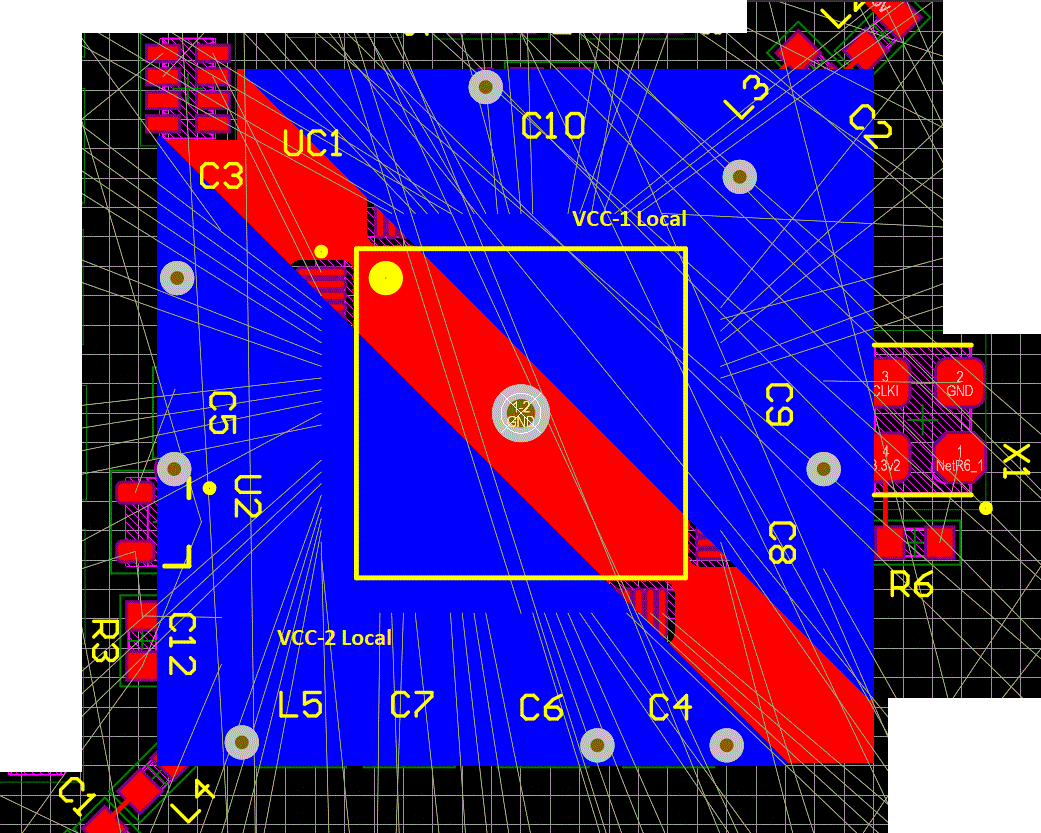It seems people have different opinions about the subject of grounding, however the way I would do it is by using traces instead of the Power planes on bottom layer, and remove the local ground plane and instead vias directly to the middle GND plane as shown in the schematic of the microchip app note. Also i base on what i read in the same book you mentioned (EMC compatibility). have you read all chapters ?
Chapter 17 page 686 :
Qoute:"
Partition mixed-signal PCBs with separate analog and digital sections.
Do not split the ground plane; use one solid ground plane under both
analog and digital sections of the board."
Which means one ground plane under the signal layer which has its physical area partitioned (imaginary separation) between Sections ( Analog alone , High speed digital alone , I/Os alone ) . The component placement and routing should be not interfere with other sections.
Chapter 11 page 461:
Qoute:"
At high frequencies, the most important criteria is to reduce the inductance in series with the decoupling capacitors.
2.The number one rule of decoupling is to have the current flow through the smallest loop possible."
According to the above:It doesnot look like the approach you are using provides the shortest path for current to the main ground plane.
EDIT: There is also a discussion in chapter 3 section 3.2 that discuss Signal grounding and mentions 3 types:
- Single-point grounds ( like what you are doing )
- Multi-point grounds (like what most people propose)
- Hybrid grounds ( a mix between the 2 above as name suggests)
To summarize what the author says:
Single-point is most effectively used at low frequency up to 1Mhz max. It controls how to direct the ground current to flow where we want it. This can be used to decrease noise in sensitive analog circuits. While Multi-point ground systems minimize the ground noise voltage by minimizing the ground impedance which is more important at high frequency digital circuits.
The confusion might be from considering the common impedance coupling shown in figure below

In this circuit VL1 = VS1 + ZG * (I1 + I2).
This means that the voltage across the load RL1 is no longer a function of I1 but also a function of I2.
Remember: A high-impedance ground at high frequency is caused by too much inductance while at low-frequency this is caused by too much resistance.
Single-point grounds overcome this by separating ground currents
that are likely to interfere with each other and by forcing them to flow on different conductors. This approach is effective at low frequency. However, the signal current paths and long lead lengths associated with single-point increase inductance, which is bad at high frequencies.
 .
.


